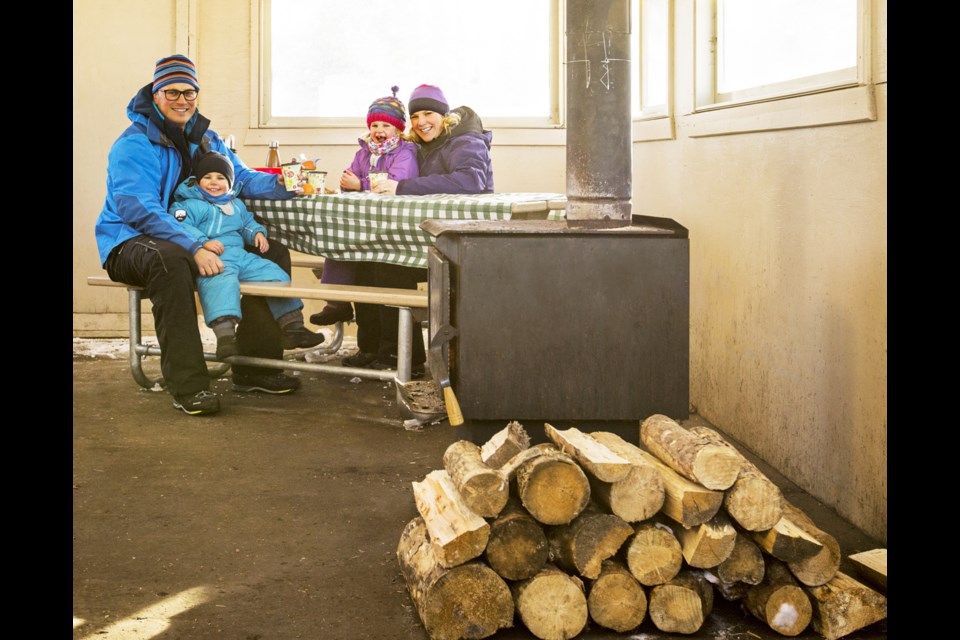WASKESIU — As daylight hours increase and weather warms in Prince Albert National Park, snow and ice disappear and there is more time to appreciate the pristine beauty, according to a Parks Canada press release.
Park officials says spring is an excellent time to enjoy nature and explore the park while there is plenty of space to roam.
Explore the wilderness of the park and get active by adventuring on a trail. As the weather changes in spring, trail opportunities will shift from crosscountry skiing and snowshoeing to hiking and cycling. Note: cross-country skiing trails are no longer being groomed this spring. Check trail conditions or contact the Visitor Centre before heading out to ensure gear matches the conditions
Set up a family meal and have a picnic. Visit an enclosed picnic shelter, located at Main Beach across from the Visitor Centre, Paignton Beach, Birch Bay, Crean Day Use Area at end of Crean ski trail and Southend Campground on Kingsmere Lake. Each shelter has a wood stove for warmth and meal preparation, making them the perfect sanctuary for a picnic. Firewood is provided.
Enjoy a camping experience. The park offers drive-in camping in spring – please contact the Visitor Centre for more information about the current offer as spring progresses. There are also several designated backcountry campgrounds to explore. Visitors should register and pay their camping fees at the Visitor Centre before any overnight excursion.
Keep an eye out for wildlife and their tracks. Forests and shorelines offer the perfect opportunity to watch for mammals such as elk, deer, wolf and fox and to listen for the hardy birds that stay in the park through the year. As spring progresses, listen and watch for migrating birds. Likewise, as snow cover melts, snow tracks will cease and tracks will be better found in the mud.
Enjoy a night full of stars and a full moon in Prince Albert National Park this spring. For the best stargazing opportunities, visit the park when the moon is next in dark phase on April 30. The upcoming full moon, when the moon’s face is fullest, is May 15.
Heated washrooms with running water are available in the Visitor Centre and Waskesiu Beach 24 hours a day. The Waskesiu Beach complex also offers showers.
The Visitor Centre is open daily, 8 a.m. to 4 p.m. from Sunday to Thursday, and 8 a.m. to 6 p.m. on Friday and Saturday. Knowledgeable Parks Canada staff can help plan visits and answer any questions: 306-663-4522 or [email protected].
Be Safe
During this time, weather can change abruptly in the park, officials warn. Overall warming temperatures can create icy road conditions, variable lake ice thickness and increase human-wildlife encounters.
Fully prepare for each activity to ensure a safe and enjoyable visit:
· Check the Important Bulletins page on the park website before travelling to Prince Albert National Park. Critical safety messages and notifications about projects that may affect visitation at during spring are located here.
· Check the weather forecast before heading into the park and be prepared for weather changes.
· Pack essential items such as adequate food, water, and clothing.
· Know how to start a fire.
· Travel and camp in a group.
· Inform friends or family of travel plans and file a trip plan with them.
· Do not rely on your cellphone as there are areas in the park that do not have service.
· Lake ice is thin this time of year – stay on land and keep pets on-leash.
· Melting snow can cause icy conditions so walk/drive safely.
· The only gas station near the east entrance of the park is located at the intersection of Highway 2 and Highway 264 and is open year round. Visit with a full tank of gas to make the most out of each visit.
The wildlife is abundant in the park. Please follow these guidelines:
· Don’t feed wildlife.
· Keep a safe distance from all wildlife. If you are affecting their behaviour - if wildlife stop what they are doing and move or change their behavior - you are too close and should give them more space.
· Animals including elk and deer are grazing along melting roadsides where grass is exposed. Please stay in your vehicle and obey speed limits – wildlife can dart out in front of vehicles with little warning.
· Bears come out of hibernation this time of year and may be present with cubs. Please keep your distance.




